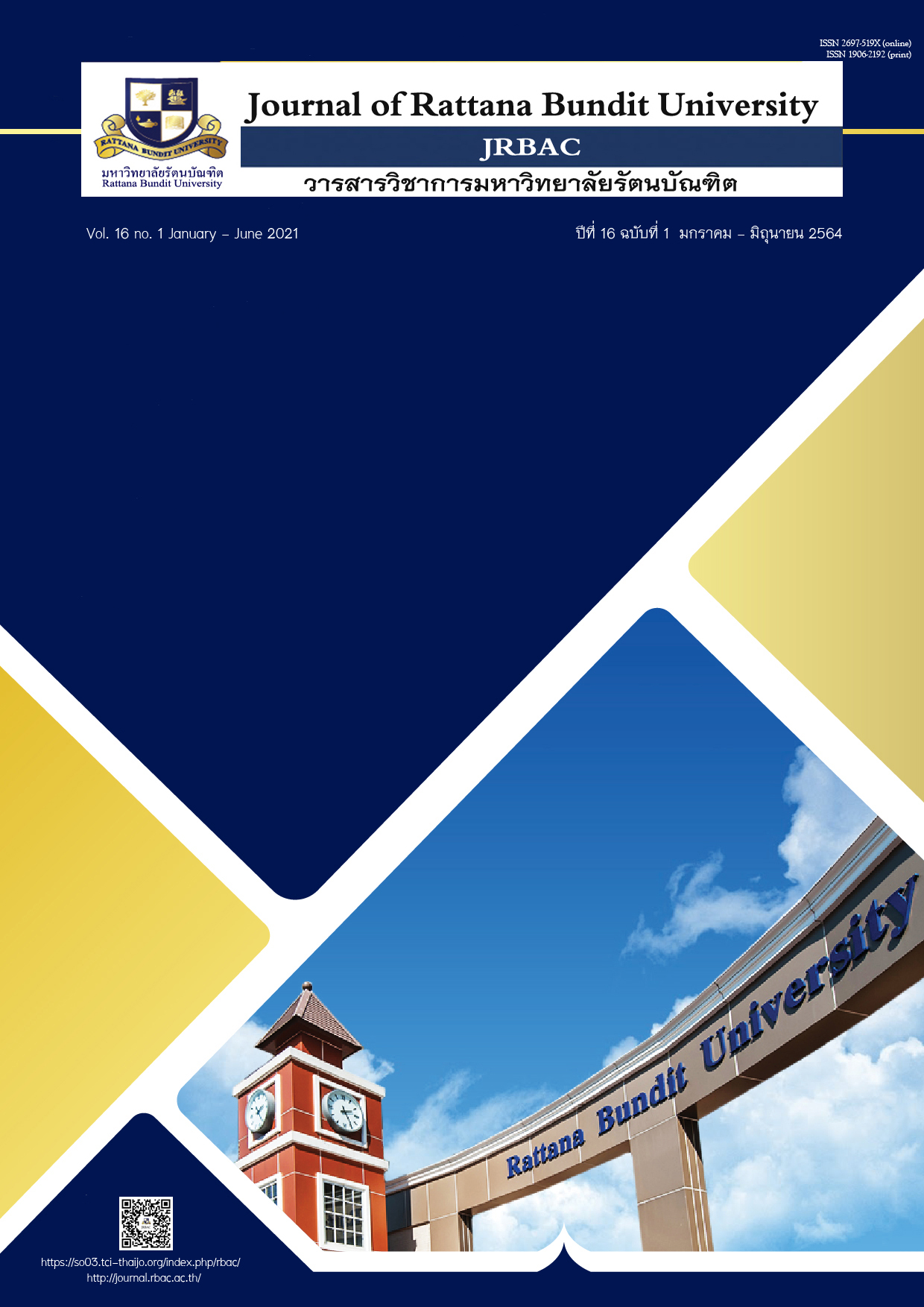The use of MOOC in a blended environment of international advertising and marketing communications course
Main Article Content
Abstract
The objectives of this pilot research were as follows: 1) to examine students’ participation in the classroom, 2) to explore students’ satisfaction with MOOC in a blended learning environment. The research method was a mix-method of quantitative and qualitative. The samples of this research were 38 students from the Faculty of Communication Arts, Chulalongkorn University. The research tools were questionnaires and open-ended interview questions. The data were analyzed using Mean score, S.D., summarized, and reported the content of the interviews. The results showed that 1) for the design of class activity, it should use other media besides Chula MOOC as an add-on program that can interact with students, 2) students’ participation in class were giving comments, answering questions, exchanging ideas on social media. The students were keen to know and know how to think. They were able to summarize key points and convey ideas through communication. They had concentration, interest, and time to read recommended articles, watch clips, and find additional information, and 3) students had a high level of satisfaction with Chula MOOC learning.
Article Details
References
Chulalongkorn University, Learning Innovation Center. (2017). Active learning. Retrieved from http://www.lic.chula.ac.th/images/Active%20Learning/Active%20Learning_01.pdf (in Thai)
จุฬาลงกรณ์มหาวิทยาลัย, ศูนย์นวัตกรรมการเรียนรู้. (2560). Active learning. สืบค้นจาก http://www.lic.chula.ac.th/images/Active%20Learning/Active%20Learning_01.pdf
Dale, E. (1969). The cone of learning. Retrieved from https://parnward8info.files.wordpress.com/2014/01/active-learning.jpg
Felder, R. & Brent, R. (1996). Navigating the Bumpy Road to Student-Centered Instruction. Retrieved from https://doi.org/10.1080/87567555.1996.9933425
Saiyot, L. & Saiyot, A. (2000). Learning measurement techniques. Bangkok: Suviriyasan. (in Thai)
ล้วน สายยศและอังคณา สายยศ. (2543). เทคนิคการวัดผลการเรียนรู้. กรุงเทพฯ: สุวีริยาสาส์น.
Support ThaiMOOC. (2018). What is MOOC ?. Retrieved from https://support.thaimooc.org/help-center/articles/77/mooc (in Thai)
Support ThaiMOOC (2561). MOOC คืออะไร ?. สืบค้นจาก https://support.thaimooc.org/help-center/articles/77/mooc
Tungpantong, C. (2017) Factors affecting learning achievement on online supplement learning (Master’s thesis). Chulalongkorn University, Bangkok. (in Thai)
ชนินทร์ ตั้งพานทอง. (2560). ปัจจัยที่มีต่อผลสัมฤทธิ์ทางการเรียนออนไลน์เพื่อเสริมการเรียนการสอน (วิทยานิพนธ์มหาบัณฑิต). จุฬาลงกรณ์มหาวิทยาลัย, กรุงเทพฯ.
Workpoint Today. (2018). Know “MOOC” online university, can learn from all over the world. Retrieved from https://workpointnews.com/2018/09/14/เจาะตลาด-MOOC-มหาวิทยาลัย/ (in Thai)
Workpoint Today. (2561). รู้จัก “MOOC” มหาวิทยาลัยออนไลน์ เรียนได้ทั่วโลก. สืบค้นจาก https://workpointnews.com/2018/09/14/เจาะตลาด-mooc-มหาวิทยาลัย/


